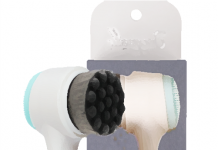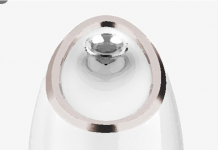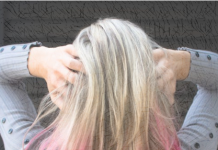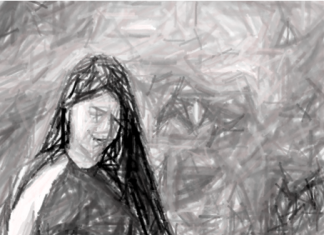What is a mole?
How universal are moles?
This situation is very universal, almost each person has one or 2 dark patches on the skin. There is a very small size there is a very large to appear. This situation too
able to affect sufferers in all ages. Discuss with your doctor for further data.
What are the indications for moles?
Moles are universal patches that appear on the skin. Spots are usually often patterned brown, although some may be patterned black on the skin. Override appearance, some dark or brown spots can be flat or prominent, smooth or aggressive, and moreover develop hair. This type of dark spot is generally a round or oval with smooth edges.
You must check your skin once every half month
to see the presence of dark spots that have just arisen. Look carefully, whether there is a change in the existing mole.
Characteristic if the dark patches that arise on your skin cancer is a new development that can arise in any part of the body. However, cancer-related often arise on the back, legs, hands and face.
Some of the features of suspicious skin spots that you must pay attention to are:
A mole that has 2 or more different patterns
Spots or uneven spots or jagged edges
Dark or brown spots produce blood, itching, redness, swelling, or crust
Dark patches on the skin swell quickly
Some indications or other features may not be listed above. If you feel afraid about these indications, consult your doctor immediately.
Skintag looks like a mole, but it’s different
Skin tags or those in medical language are pronounced acrochordon, often predicted like a mole. Meanwhile both are different types of skin problems. Skin tag is a delicate tissue in lumpy skin. Skin tags are sometimes also said to also develop meat, but this situation is not at risk and is also not a sign of a serious skin problem.
Typically, the state of this skin clot is small. But along with age, skin tags can develop to swell. Not only swollen, these lumps can also change the pattern to match the complexion of the skin.
Swollen and prominent skin tags are usually flexible, movable, painless, and not rigid.
Comparison of moles and skin tags can be seen from the position where it grows. Generally skin tags are found on the neck, chest, back, armpits, on
the base of the breast, in the groin area, or in the genital region.
According to Harvard Medical School, a gifted skin tag turned into a kind of skin cancer like a mole. The condition of this lump of meat is universal and usually intertwined in women compared to men.
There are also risk aspects that can lead to intertwined skin tags. Usually because a person’s body weight increases in an extreme manner and because there is genetic inheritance from his parents
If the skin tag can interfere with your activities and appearance, please consult with your doctor to remedy further. Generally the state of this meat clot can be removed by cutting or disposed of using a sharp knife. There are also those who use healing methods to freeze lumps of meat and burn the stem. Willing but this situation is not often tried.
When is the obligation to go to the doctor?
Although most moles are benign (non-cancerous), in very rare cases they can grow into melanomas. Melanoma is a type of skin cancer that appears on the skin, causing bleeding, itching, or skin flushing.
Melanoma can grow dark spots that were there. Not only that, it can also arise when there were no spots or black spots on your skin. You are also obliged to check this dark spot
if it suddenly bleeds, produces fluid, itches, or becomes soft or painful.
What triggers a mole?
Most moles arise from birth, even though the majority grows throughout the first 30 years of your life. Dark brown spots are skin cells called melanocytes that arise in groups. These cells make melamine which distributes skin complexion. They tend to darken when exposed to sunlight, throughout the life of a young child or along a two-bodied body.
The trigger for new moles develops as adults
Not yet known what triggers moles develop when old age. Dark spots that have just arisen on the skin may be benign or can be cancerous.
A research study in 2015 revealed that there was a genetic mutation of the BRAF gene in a new mole that developed when it was the age that gave rise to cancer.
Not only that, 78% of the problems of dark brown spots that arise when age is reported to be benign, the rest are at risk of cancer.
BRAF genetic mutations in the human body are known to exist in melanoma cells. But how the process of changing from benign type to be at risk of cancer is not yet known.
Then, the presence of ultraviolet (UV) light interactions, both natural and artificial, is known to cause genetic destruction that can lead to the growth of melanoma and other skin cancers. Exposure to sunlight can be established throughout childhood or young age and only after that creates skin cancer.
The risk aspect that makes you have a mole that arises when you are old is
Increasing age
Having a type of white skin and hair that has a bright or red pattern
There is a family history of atypical moles
Take medicines that suppress your body’s immune system
The presence of a response to other drugs, such as some antibiotics, hormones, or antidepressants
Genetic mutation
Attacked by sunburn, exposure to sunlight, or the use of tanning beds
Dark spots that arise when age tends to turn into cancer. A review of the 2017 research problem created that 70, 9 percent of melanoma arises from the presence of new dark patches on the skin. If you have created the presence of spots or dark spots on the skin recently, it means to have it checked by a doctor or dermatologist.
What increases the risk of moles?
There are many aspects to the risk of moles, including:
Exposure to sunlight
Some races are more susceptible to moles
Take medicines that suppress your body’s immune system
The presence of a response to other drugs, such as some antibiotics, hormones, or antidepressants
How is the doctor’s method of diagnosing moles?
Estimation of cancerous moles
To check whether dark spots have cancer risk or not, the doctor wants to ask about the condition of the skin and check with the ABCDE procedure:
Asymmetry: one side of the dark spots is not symmetrical with the other side
Border (boundary): border or edge of an aggressive dark spot, opaque, or irregular
Color (color): patches on the skin are not entirely the same or somewhat tanned, brown, dark, blue, white, or red
Diameter: The diameter of the blotch on the skin is bigger than a pencil eraser
Evolution: changes in dimensions, shapes, or patterns
If the mole doesn’t change over time, there’s no need to be afraid. If you look at the changing characteristics of dark or brown spots on the skin. Also, if the doctor or you are aware of the presence of spots or dark lumps, and want to eliminate them for appearance alibis, talk with a dermatologist.
If you suspect that there are spots on the skin with cancer, your doctor may beg you to take a skin biopsy. Skin biopsy is a small illustration of the skin that has dark patches for inspection in the laboratory.
How to cure moles?
Natural moles do not need healing if you do not feel choked up by their arrival. In that case, you may eliminate this condition in accordance with the advice of a dermatologist. If you have been diagnosed with a cancer-marked mole, surgery for melanoma at an early stage is often successful.
Operation
Surgery is often the main cure for melanoma. After surgery, you will definitely need rehabilitation to avoid the appearance of these dark spots or bumps again.
If there is a talent for cancer, your doctor wants to carry out surgical procedures to eliminate it.
Surgery to get rid of dark patches on the skin only requires some time, not very long. This surgery is generally also tried by outpatient methods do not need to be hospitalized. Raising a mole only requires a short amount of time and is generally tried on a pathway basis.
Doctor You want to turn off the nerve zone near the spots or bumps and cut it. Sometimes, want to be raised together with healthy skin if needed. This procedure can leave a residual injury permanently. If you look closely at the spots or protrusions has developed again, quickly see your doctor.
Cosmetic treatment
Not only that, you can also cover up a mole by hiding using makeup. But not all lumps or black patches on your skin can be covered with makeup just like that. The reason. chemicals in makeup can run the risk of making blotches or black bumps on your skin irritated.
It is a good idea to talk with your dermatologist about removing hair and spots or dark lumps on the skin permanently.
Beware of moles developing again
Even after surgery, patches or dark lumps on the body can reappear. This is because the mole you have is a feature of cancer. Generally, patches or lumps can develop again after surgery because there are cancer cells in it.
If the spots and lumps are the type ordinary, or even more so merely merely a skintag, usually do not want to return after the raising procedure. As for data from the American Academy of Dermatology, a developing mole can be a feature of melanoma.
Therefore, you need to consult a doctor quickly if the mole develops again after surgery to justify the cause. If indeed the spots or dark lumps are listed as cancer, they need action to be taken quickly so that the cells do not spread to other parts of the body.
What are some lifestyle changes or home remedies that can overcome moles?
There are some uses of natural ingredients that are believed to eliminate or fade dark spots on the skin. Even so, you should consult a doctor before using some of the following natural ingredients
1. Use garlic
Some people believe that rubbing garlic with a mole for a period of time will make it decrease or disappear altogether. Garlic is used because it has an enzyme that can dissolve groups of cells that cause the presence of dark spots on the skin. But be warned, wearing or rubbing too much garlic into the skin can cause
burned skin.
2. Use honey
Some research shows that honey has an antioxidant and anti-inflammatory character. Some people believe that applying honey to a mole will cause their dark spots to disappear within a few days.
3. Use aloe vera
Aloe vera is a natural ingredient that has many properties for the skin. Some people believe that when used at the same time, aloe vera wants to help get rid of moles.
Way
use it, apply a plant gel or aloe vera product to the problematic skin. It is better to carry out aloe vera allergy test first before before being applied directly to the skin.
Not only that, you are encouraged to keep an eye on the mole so that it does not turn into anker. Enis mole
This cancer can occur anywhere on the body, but the majority arise on the back, legs, arms, and face.
Stay away from using mole removal cream
Many sell mole remover creams at pharmacies or other beauty shops. The good is not origin using these products. The reason, the cream can cause irritation, especially damaged skin.
Not only that, people with old health problems in the treatment of injuries, such as diabetes, must consult a doctor to get rid of moles comfortably. You also must finish using any skin medication to get rid of moles if you face an adverse response such as itching, redness and irritation.

















